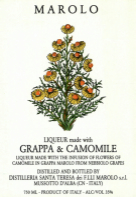If you’ve had Grappa before, your memory of it may not be all that pleasant. For many of us, our first experience with Grappa was eerily similar to our first shot of tequila – after a night of boisterous merriment at a local Italian/Mexican restaurant, the waiter brings over a tray of small glasses filled with white lightning, which in our happily drunken state we throw back with abandon, only to regret it seconds later as the alcohol burn consumes our entire body and we quickly look for the closest restroom. But just like tequila, that’s not supposed to be our Grappa experience. It’s just that, unfortunately, there is a lot of cheap, crappy Grappa out there, just as sadly too many places offer terrible tequila that tastes like kerosene. These experiences leave us swearing off Grappa, without ever understanding its amazing potential. But Grappa can be really really great, you just have to know about the good stuff. If you’re a lover of wine, you definitely should get in to it.
Grappa has been around for almost as long as we’ve been making wine, since Grappa is made from the grape pomace – the skins, pulp, seeds and stems – that is leftover after the juice has been pressed out and is on its way to fermentation. That said, it’s somewhat unclear as to how we figured out these leftovers could be used to make a separate alcohol in the first place.
Legend has it that a Roman soldier first distilled Grappa from leftover pomace in the village of Bassano Del Grappa sometime in the second century. As the story goes, the soldier realized that the skins, seeds and stems that remained from making his wine still had plenty of flavor inside of them and could be turned into a mash which could then be boiled and distilled using a process he saw in Egypt that extracted the pure alcohol from the mixture. After cooling down the extracted alcohol, he had a new drink he called Grappa. While the legend is a nice and succinct way to explain how Grappa is made from the same grapes used to make wine, the story has never been proven.
Regardless of how Grappa actually came to be, it can now be found throughout Italy, its spiritual home, with hundreds of wineries and distilleries producing it. The fact that hundreds of places are making the stuff is what causes the quality to be so variable across the board, which is what most likely accounts for most people’s bad first encounter. Just like wine, Grappa’s quality all depends on the quality of the grape pomace used to make it. Utilize pomace from a quality vineyard, and already you’re well on your way to making quality Grappa, but use poor quality pomace and you’re probably a quick trip away from puking in a can. Wine isn’t the only alcoholic beverage whose journey starts in the vineyard.
If you had a bad experience with Grappa years ago, or you’ve never had it in the first place, you should really give it a proper try. After a long meal and a few glasses of wine, it’s a wonderful drink to bring everything to a close. Italians even like to add it to their after-dinner espresso, referring to the drink as a caffè corretto, or a “corrected coffee,” because no one really needs all that caffeine late at night, but no self-respecting Italian would ever order a decaf.
The trick to drinking great Grappa is simply relying on your nose and sense of touch. One of the surest ways to identify a bad Grappa is by recognizing an aroma that connoisseurs refer to as “pet shop.” When you are first served Grappa, dip your finger in the glass and rub a bit on the back of your hand. The smell should be fresh and the Grappa shouldn’t feel oily. If it’s very high quality, you might even smell grapes. If instead the smells are taking you back to your last trip to Petco and your hand feels as if you’ve rubbed olive oil on the back of it, you probably have a Grappa that was made using cheap and moldy ingredients. Put the glass down and slowly walk away.
 If you don’t really trust yourself to identify these irregularities, don’t worry, just find a producer known for quality. One such producer that we love here at VinePair is Marolo. The Marolo distillery is based in Italy’s Piedmont region in the city of Alba, and they’re currently producing what we think is some of the country’s most high-quality and interesting Grappa offerings. One Grappa by Marolo we are obsessed with is their Milla bottling. Milla is more of a liqueur than a Grappa as Marolo infuses the Grappa with Camomile flowers as its distilled. The resulting flavor is really something quite extraordinary that you simply must try.
If you don’t really trust yourself to identify these irregularities, don’t worry, just find a producer known for quality. One such producer that we love here at VinePair is Marolo. The Marolo distillery is based in Italy’s Piedmont region in the city of Alba, and they’re currently producing what we think is some of the country’s most high-quality and interesting Grappa offerings. One Grappa by Marolo we are obsessed with is their Milla bottling. Milla is more of a liqueur than a Grappa as Marolo infuses the Grappa with Camomile flowers as its distilled. The resulting flavor is really something quite extraordinary that you simply must try.
